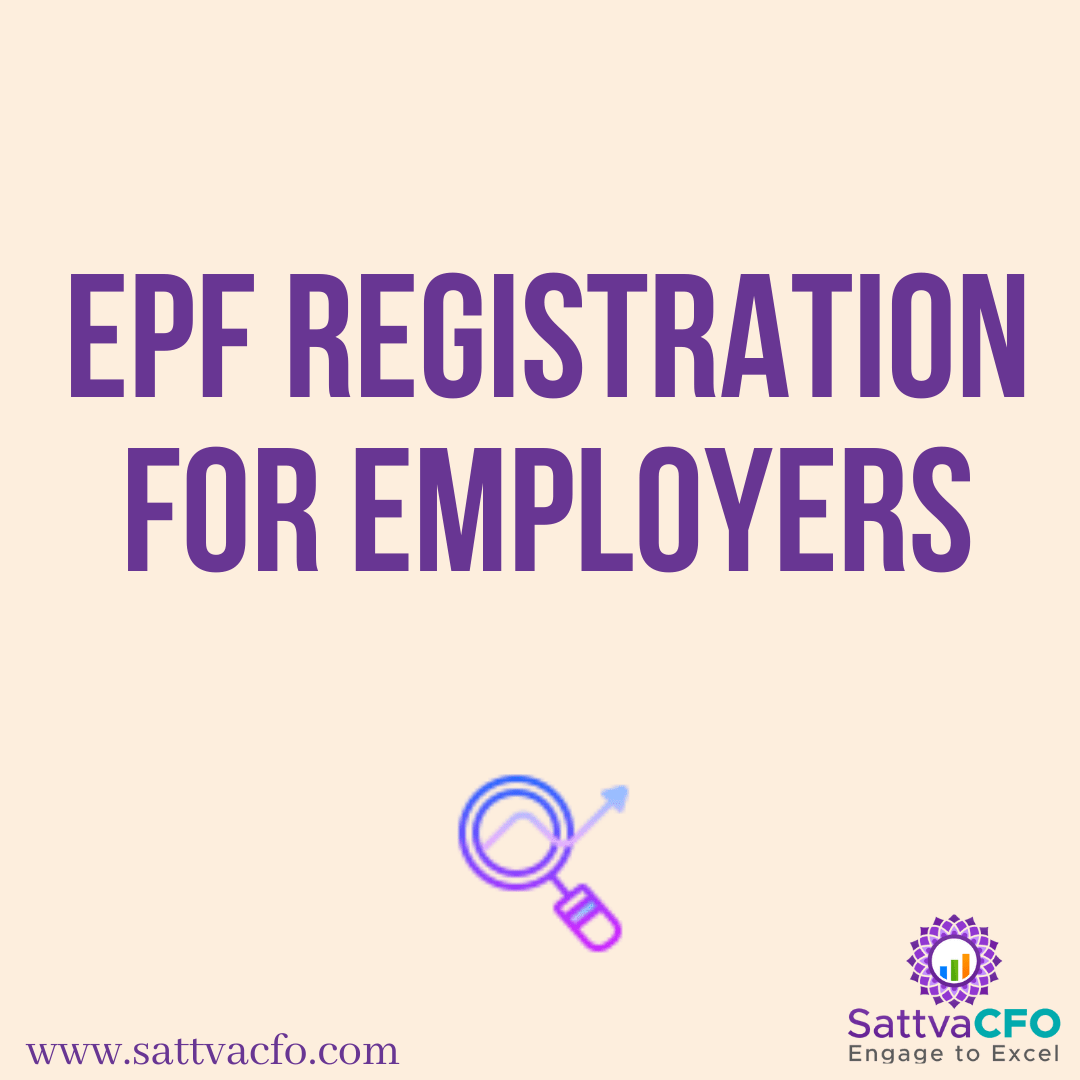EPF Registration For Employers
Employees Provident Fund (EPF) is a scheme under the Employees’ Provident Funds and Miscellaneous Provisions Act, 1952. It is regulated under the purview of the Employees’ Provident Fund Organization (EPFO). Articles discusses about EPF Registration for Employers, EPF Registration Procedure, Steps for EPF registration for employers, and Applicability of EPF registration.
Table of Contents
Applicability of EPF registration for employers
If you employ, or if a majority of your less than 20 employees in your business, and when a majority of your workers declare their permission for exemption, you could be spared from enrolling for the EPF program. You may still be subject to certain conditions and be needed to complete a number of requirements in the latter scenario.
EPF Registration Procedure
- The company’s Name and Address.
- Information about the headquarters and branches.
- Specify the company’s incorporation date.
- Enter your personnel information – total staff strength.
- Producing, manufacturing, administration, and other activities that the company engages in.
- Legal information: It refers to a business’s legal standing, such as whether that is a private or public corporation, a partnership, or a society.
- Details about the owners, including the addresses and phone numbers of the executives and partners.
- Details on employee salaries, such as the total salary given out in a month.
- PAN information of the bank with whom the firm has a banking connection.
- Employee’s basic information (Name, Date of joining, salary, etc.)
- To complete the registration procedure, a document named “Proforma for Coverage” must be filled out using the information listed above, and to fulfill the requirements, employers must also submit Form 5A, including Annex a. in addition to this Proforma for Coverage.
Steps for EPF registration for employers
- Access the EPFO portal and enroll your firm. There will be a button labeled “ESTABLISHMENT REGISTRATION” on the Unified portal’s main website.
- You would be directed to the next page where you may “Download Manual” after clicking on “ESTABLISHMENT REGISTRATION.” Before registering, a new user must download and study the instruction booklet in its entirety.
- The company must register on EPFO’s USSP after reading the rules. The EPFO website’s “ESTABLISHMENT REGISTRATION” option will take you to the USSP login page. To make an account, click the “SIGN UP” option and enter your Name, Email, Mobile Number, and Verification Code.
- The company must first log into the USSP and then choose the “Registration For EPFO-ESIC” option on the left side of the page. Then, on the right side of the screen, click the “Apply for New Registration” option.
- The Employees’ State Insurance Act, 1948 and the Employees’ Provident Fund and Miscellaneous Provision Act, 1952 would show as possibilities. Employers must choose the Employees’ Provident Fund and Miscellaneous Provision Act, 1952, and then press the Submit option.
- The “Registration Form for EPFO” page will appear after pressing the Submit button, and the employer must fill in the Organization Details, Contact Persons, Identification number, Employment Information, Branch, and Services.
- The employer’s Digital Signature Certificate (DSC) must be submitted and linked to the application after filling out the “Registration Form for EPFO” and attaching the necessary papers. The employer will receive an email from Unified Shram Suvidha Platform confirming that the EPFO registration has been completed after the DSC of the employer has been submitted.
Documents required for EPF Registration
- The Proprietor’s/ PAN Card.
- Documentation of residencies, such as the Registered Office’s Electricity, Water, or Telephone Bill
- Proprietor’s Aadhar Card
- Any government-issued license for the establishment, such as a shop and establishment certification, a GST certificate, or any other government-issued certificate.
- The Proprietor’s digital signature.
- A cheque that has been canceled
- If applicable, a Leased Agreement
Also read:





Leave a Reply